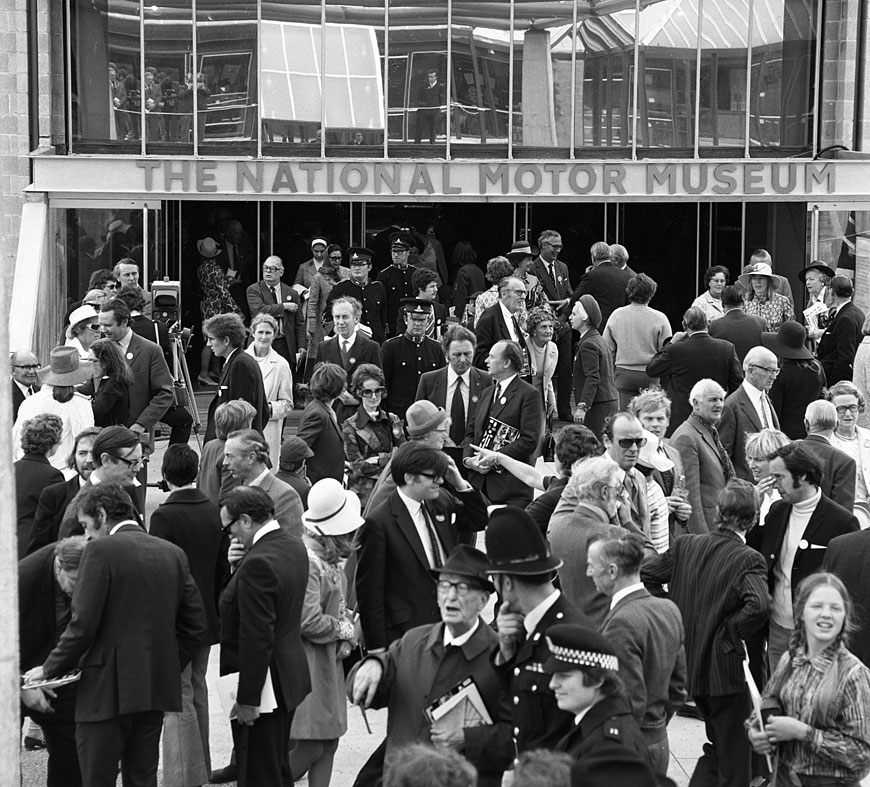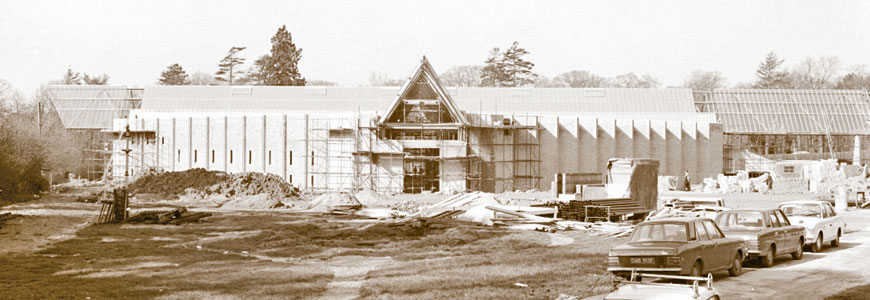
Former National Motor Museum curator Michael Ware shares some of his memories of setting up the museum half a century ago, and the challenge to get everything ready for its opening on 4th July 1972.
“I came to work at the Montagu Motor Museum in August 1963, as the Photographic Librarian. My training had been in photography and for five years I had been specialising in motor racing photography. Taking pictures of the museum cars brought me into close contact with the collection itself and the staff in the museum. In 1966 Michael Sedgwick, then the Curator, left to become a freelance researcher and author. Lord Montagu offered me the job of Curator, which was a great surprise.
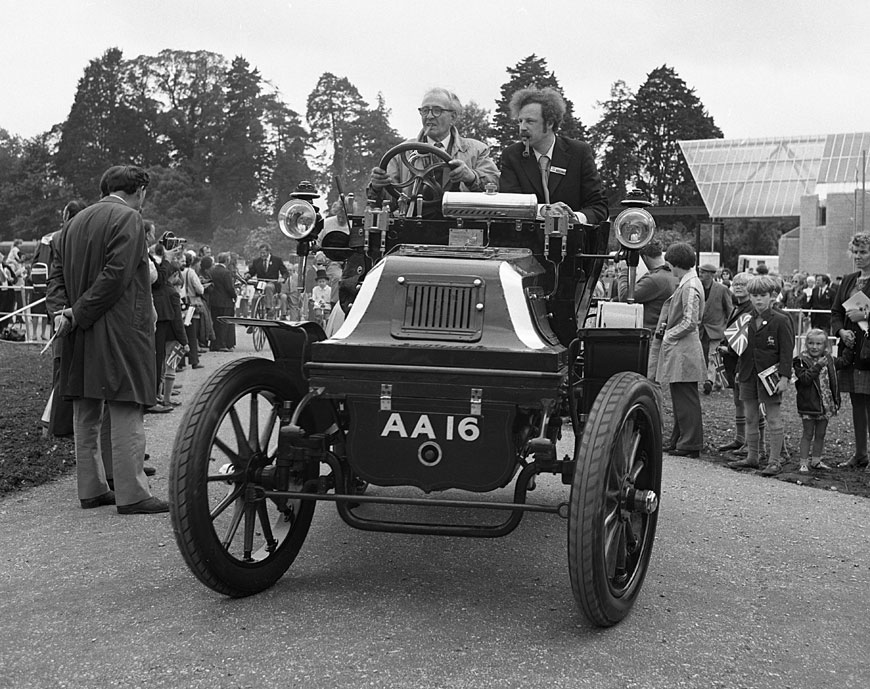
The old museum
“The existing museum had been opened by Lord Brabazon of Tara in 1959 and consisted of a single story building, adjacent to the two older wooden buildings which had previously housed the collection after it had moved out of Palace House. The collection had grown considerably and the building was virtually full of cars, motorcycles, record breakers and assorted bits and pieces (which we now call automobilia).
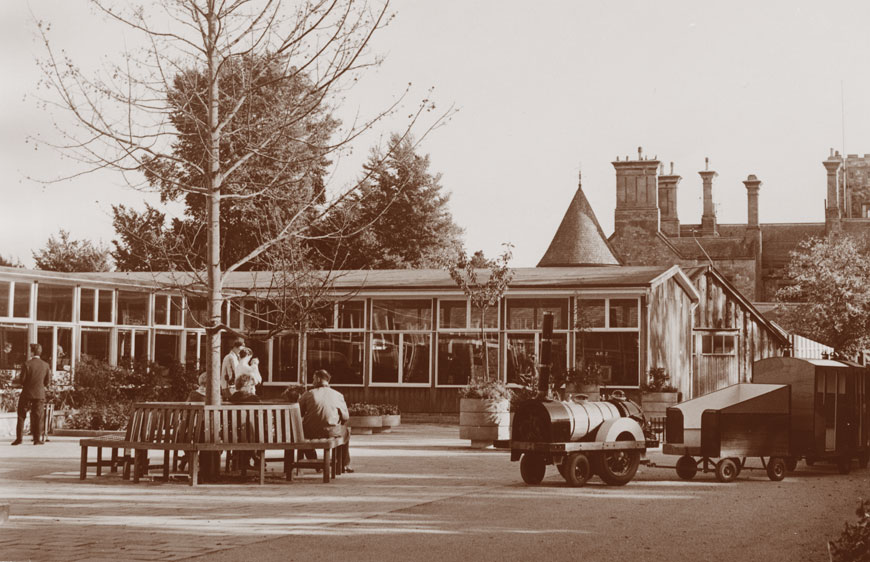
“With visitor numbers rising fast, it was apparent that the site, as it was laid out, was not suitable. On a busy day you joined a queue at the paybox and continued in the same queue to the museum and around the exhibits. Lord Montagu commissioned a report by Elizabeth Chesterton to see how it all could be improved.
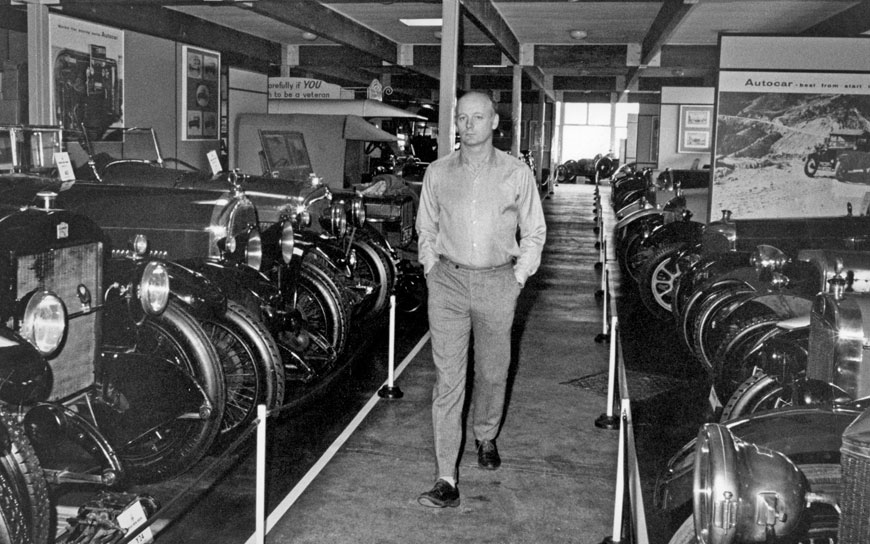
“The layout we have today was based on her report, with a new bridge over the river, car parks in woodland, and a new office block and entry point, along with a central path to Palace House flanked by the motor museum and cafeteria building.
Beaulieu Museum Trust
“The project started with the formation of the Beaulieu Museum Trust (later re-named the National Motor Museum Trust), which was governed by a group of independent Trustees overseen by the Charity Commission. Fundraising started and soon the go-ahead for the new museum was given. The foundation stone was laid in 1969. Leonard Manasseh was chosen as the architect and Sir Hugh Casson as the interior designer.
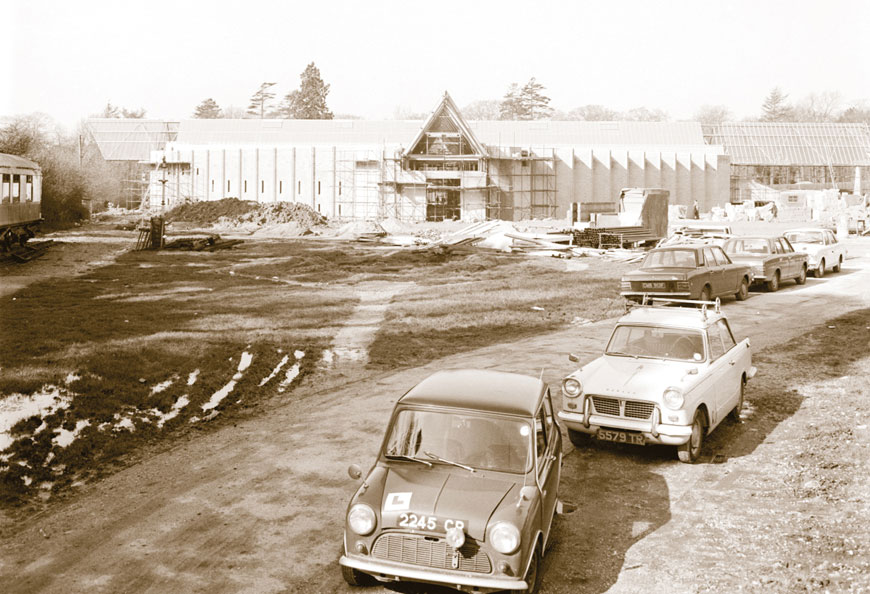
“My job was to pre-plan the move so that, if possible, the site would not have to close. At first, we were told that the new building would be handed over to us three months before the fixed Royal opening date. Due to over-running, I think we had a maximum of four weeks. It seemed much less!
The big move
“Unlike the old museum, this new building had a lot of interior height and gave us a chance to spread the exhibits out. My assistant Derek Maidment, who at one time had worked in an architect’s office, obtained a large scale plan of the museum, and proceeded to cut out paper shapes to scale size for each car. No computers in those days.
“The central path made an easy connection between the old and new buildings, except for the fact that a small pond and fountain had been built part way down. The fountain was dismantled by the maintenance staff and covered by a long wooden ramp. With the exception of the low-slung Land Speed Record breaking cars in the collection, everything could be moved on this path.
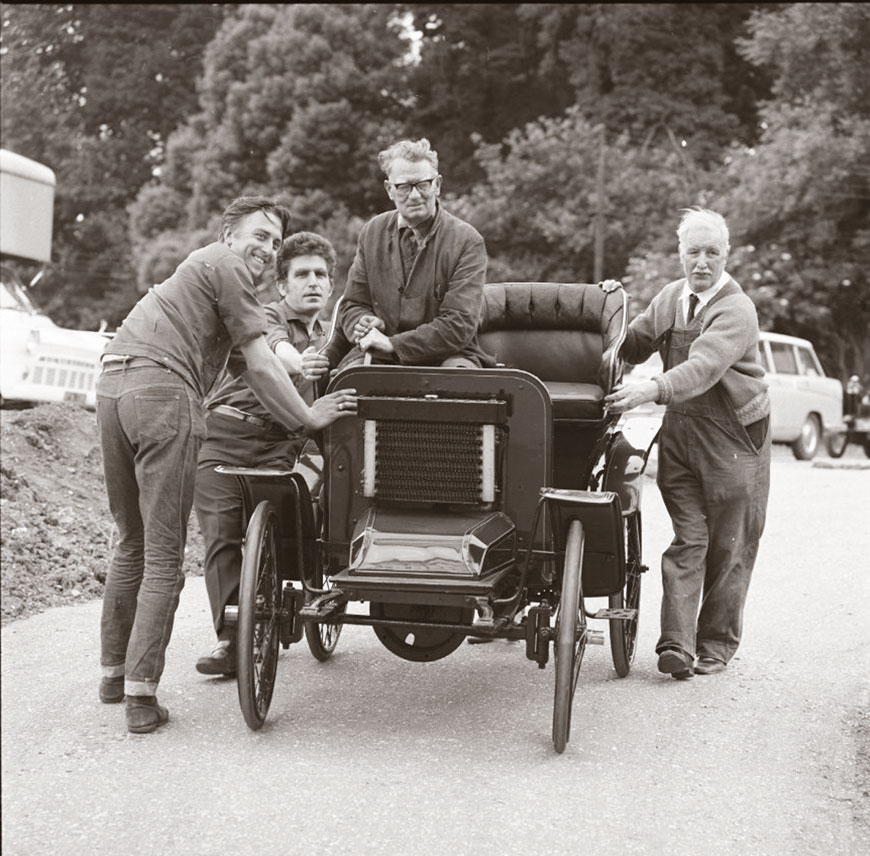
“With the aid of Derek’s plan, we knew which cars we wanted, when and in which order. The moves took place every day from visitor closing time until late, usually around midnight, using three Land Rovers and every possible member of the Beaulieu and Estate staff.
“The first night, we moved the cars for the entry level floor of the museum and put them in their correct places with pre-prepared captions alongside. The next day, visitors were allowed into that part of the new building. The next night, we did the same for the ground floor, followed later by the motorcycles, each one of which had to be taken up on a rather slow lift.
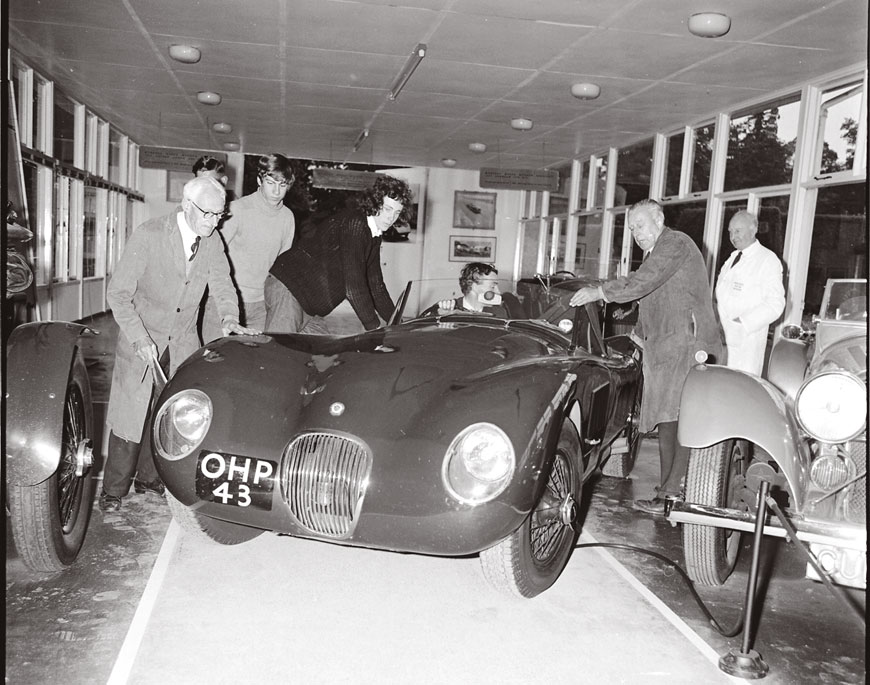
Interior fittings
“As with most building schemes, the costs overran. The only budget from which this money could be found was the display budget, so in the end Sir Hugh Casson was only able to design the entry area, known then as the Hall of Fame. He did us a great favour by recommending two of his ex-pupils, Dennis Brennan and Michael Whalley, to look after the collection of automobilia which needed to be displayed.
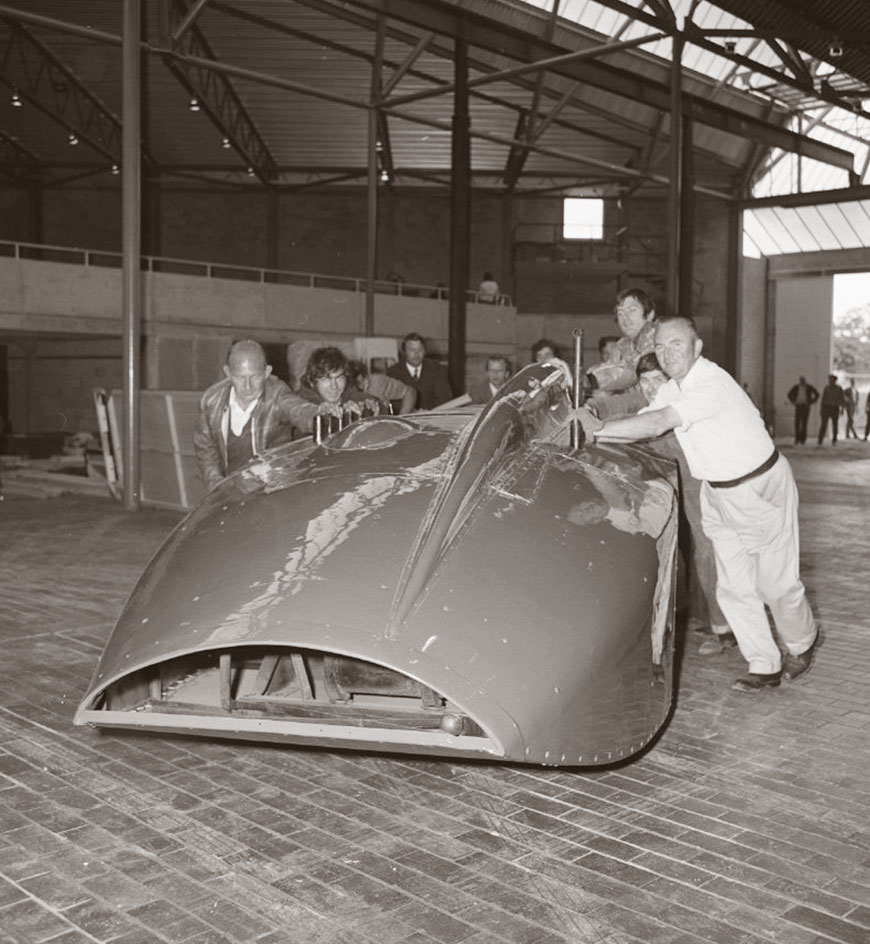
“Dennis and Michael were brilliant. We could not afford any showcases, so old ones were scrounged from the Victoria and Albert Museum which the two rubbed down, altered, painted and made them look quite modern. They spent nearly all of the four weeks available laying out and captioning these showcases.
“I did not like the original breeze-block finish to the Museum interior and had as many of the museum’s collection of historic posters put up on the walls, much to the disgust of the architect! There were, of course, many new exhibits to be displayed, some on loan from the motor industry, others from private owners. Each of these moves had to be co-ordinated.
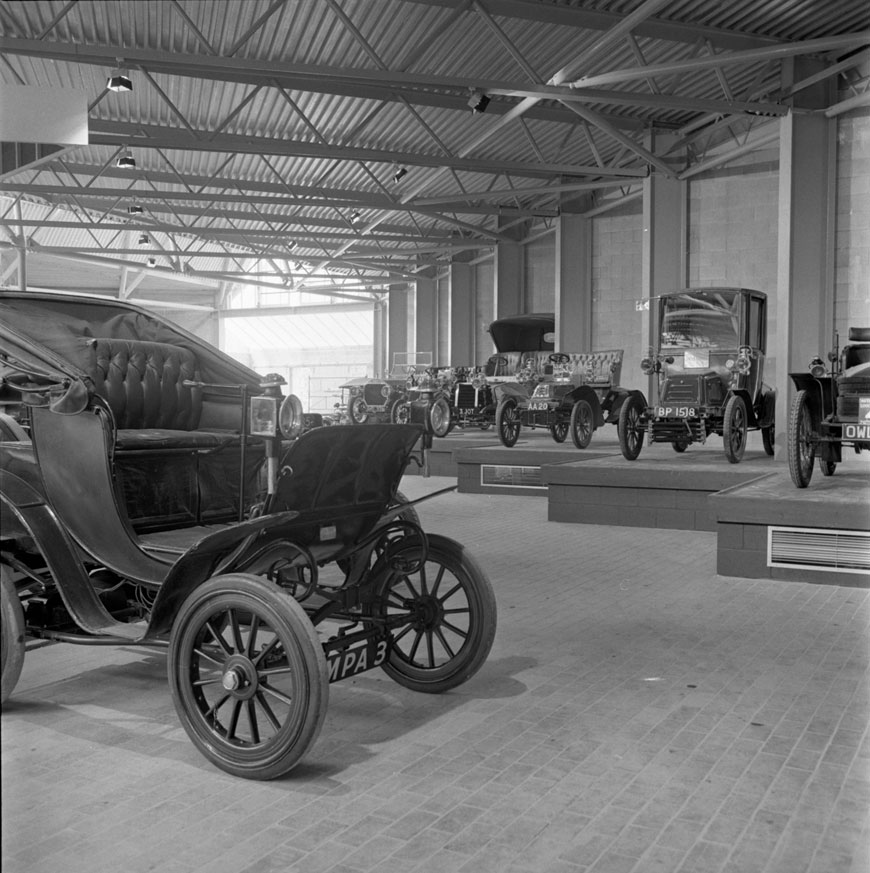
“The bays beneath the upper floor were each allocated to a major sponsor and they were asked to put in an appropriate historic display. Luckily, these sponsor companies were used to working to tight deadlines for motor shows, so the short space of time available to them was not too inconvenient.
Workshop move
“Outside in the grounds, there were also larger exhibits that needed to be moved away from the site, including a steam locomotive with three Pullman carriages, a hovercraft and a snowcat.
“Besides helping with all the movements, the workshop staff had their own move to arrange. As built, the new workshop at the back of the museum had a viewing window in its roof, so the public could see work underway on the museum cars. This viewing window became known as the ‘goldfish bowl’. For opening day, we just had to have a finished workshop that visitors could see.
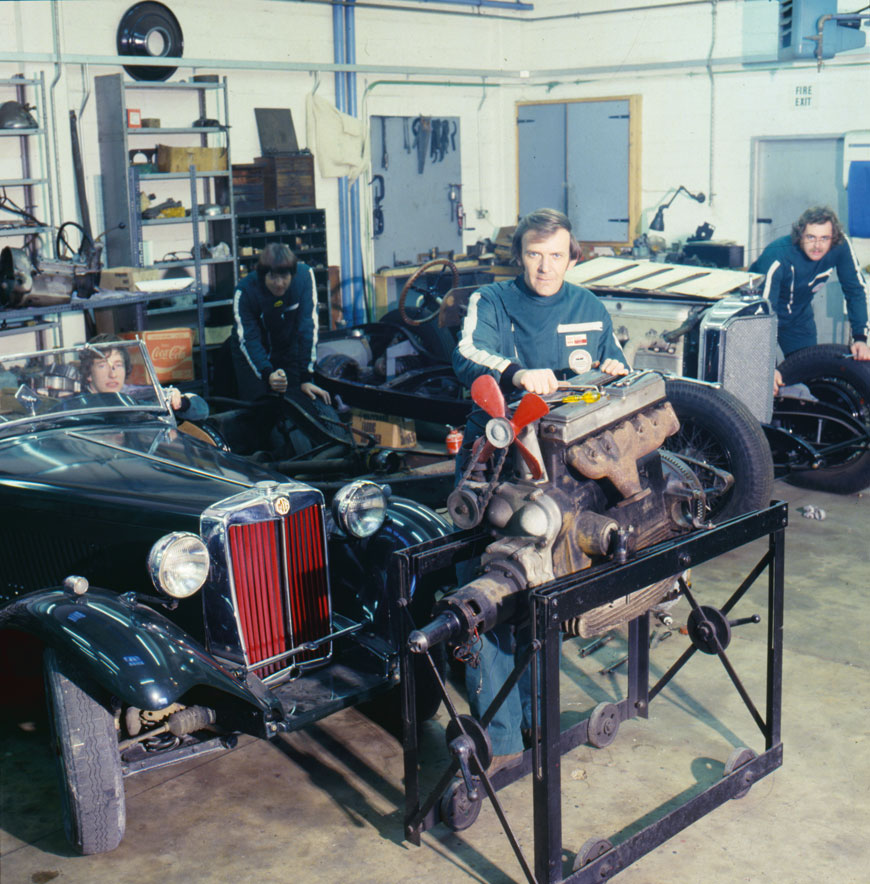
Opening day
“Luckily for me, others were responsible for the actual opening ceremony, dinners etc. On the day I remember lining up with the Trustees and being presented to HRH the Duke of Kent. After all the Trustees, VIPs and visitors had taken their places, I saw little of the ceremony. I remember sitting at the back of the veteran section, well out of sight with my head in my hands, trying not to fall asleep.
“We can’t have made too bad a job of it, as a year or so later we were awarded the Museum of the Year award.”
